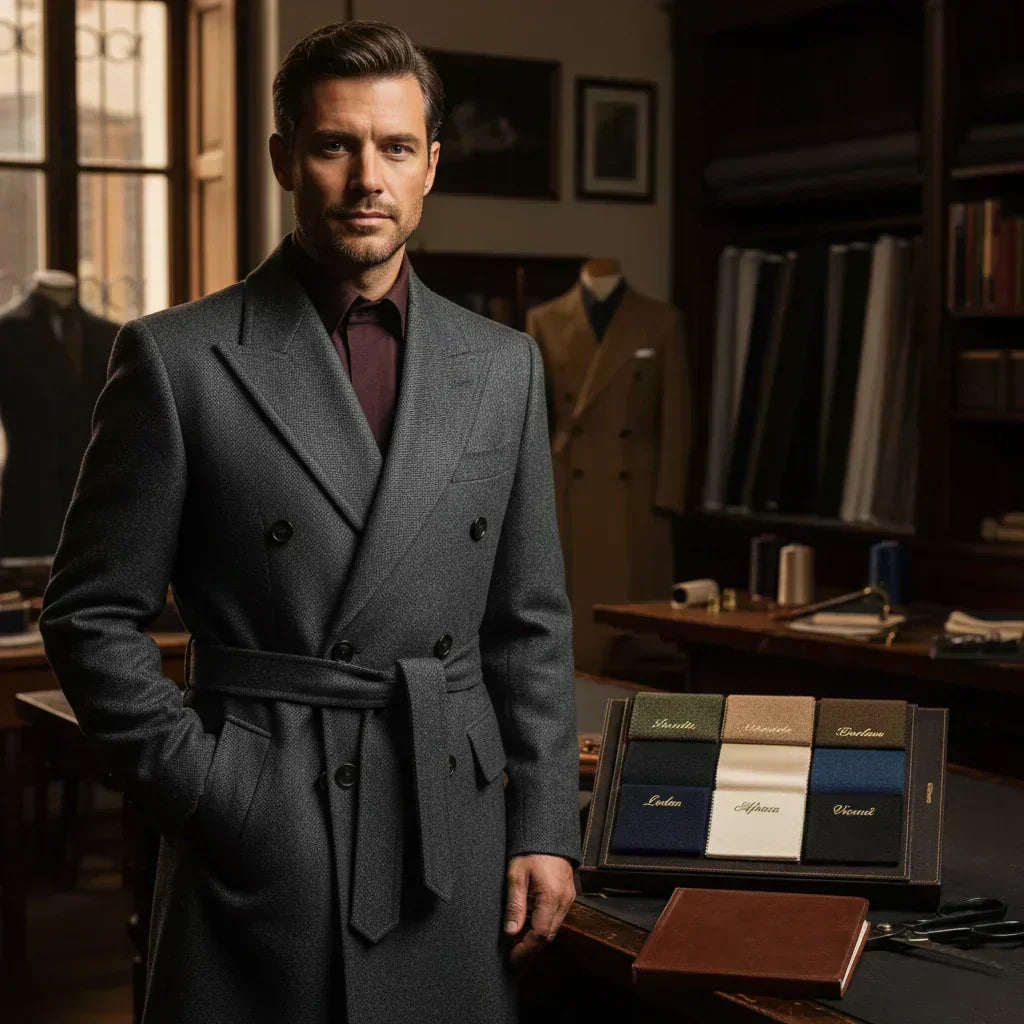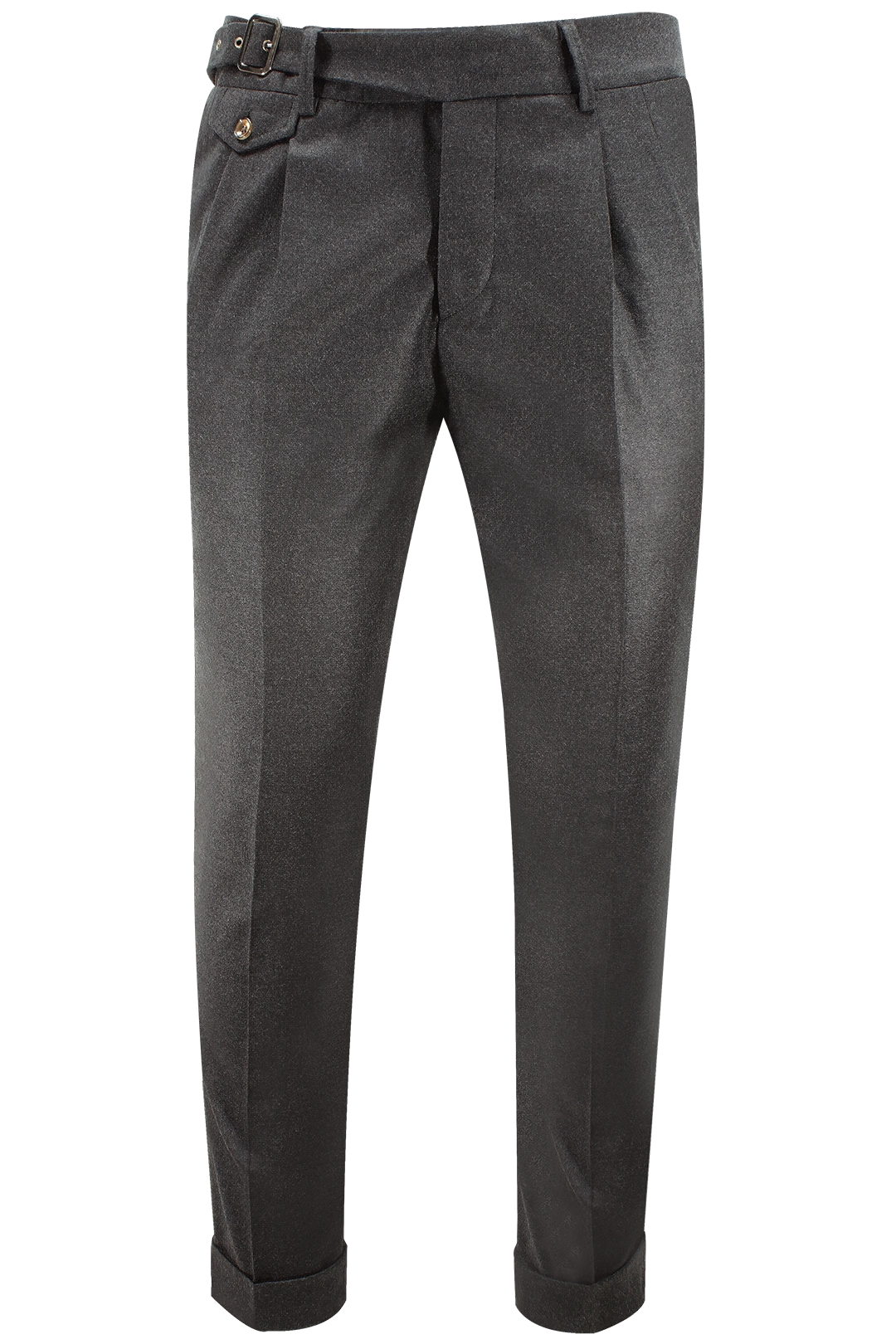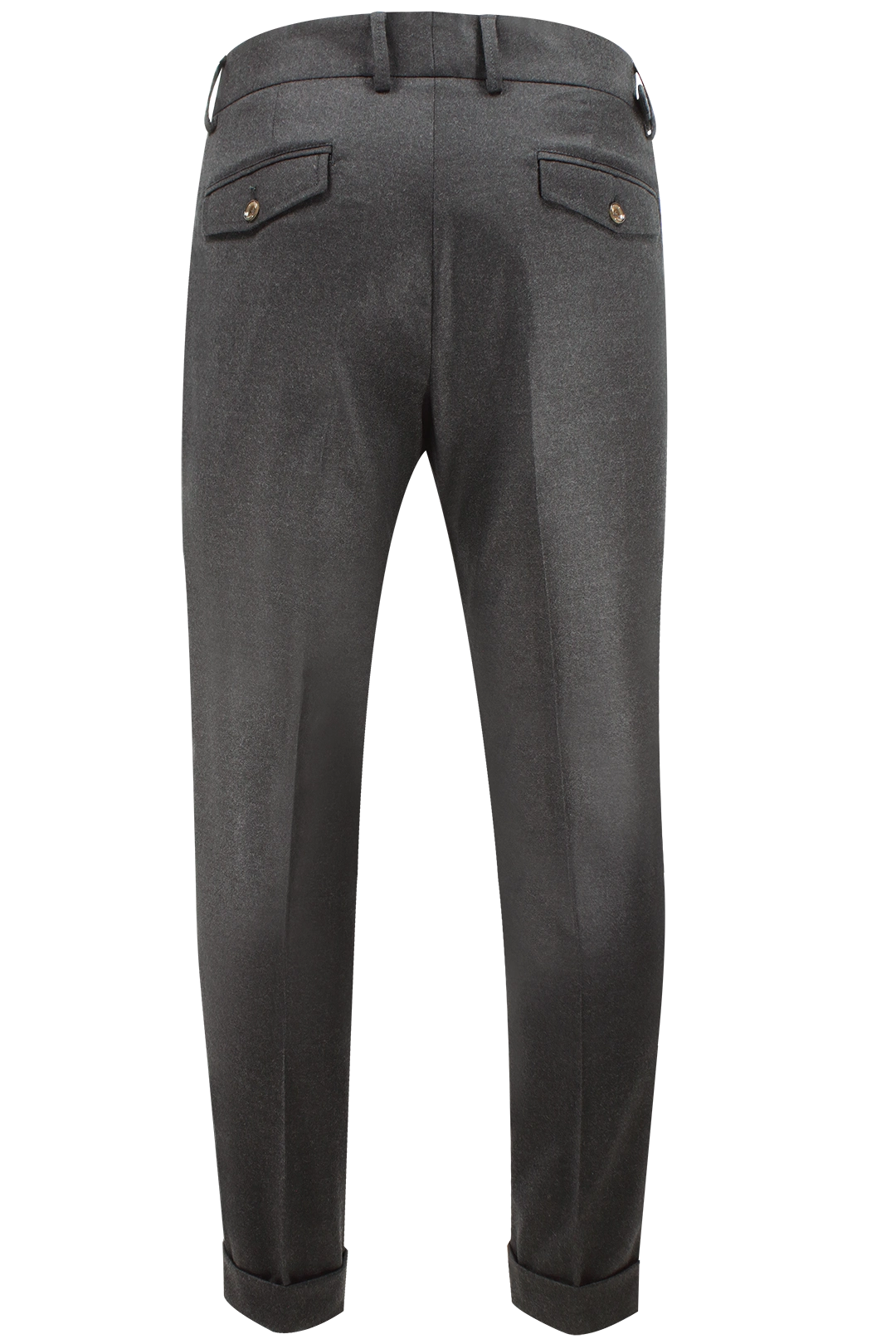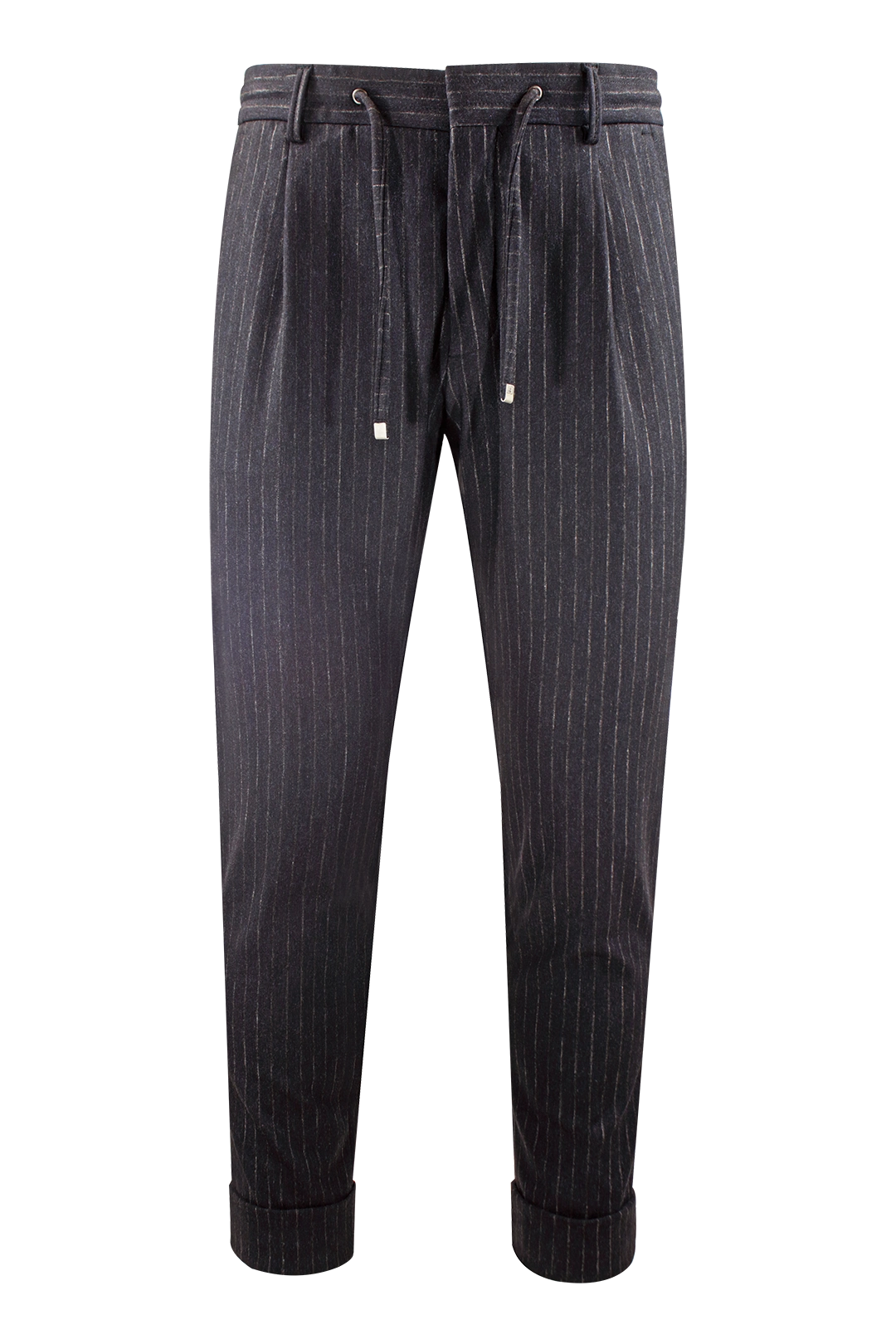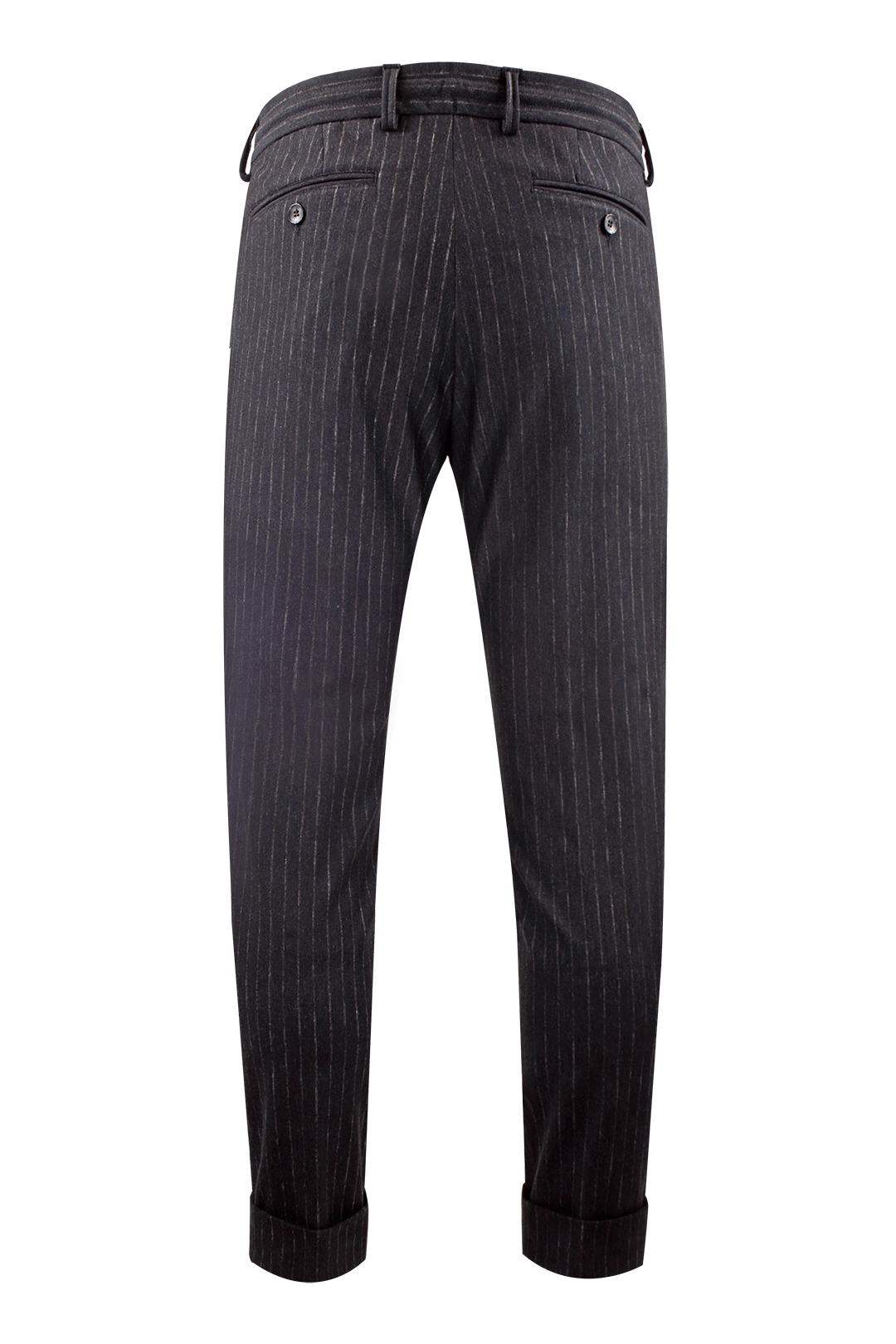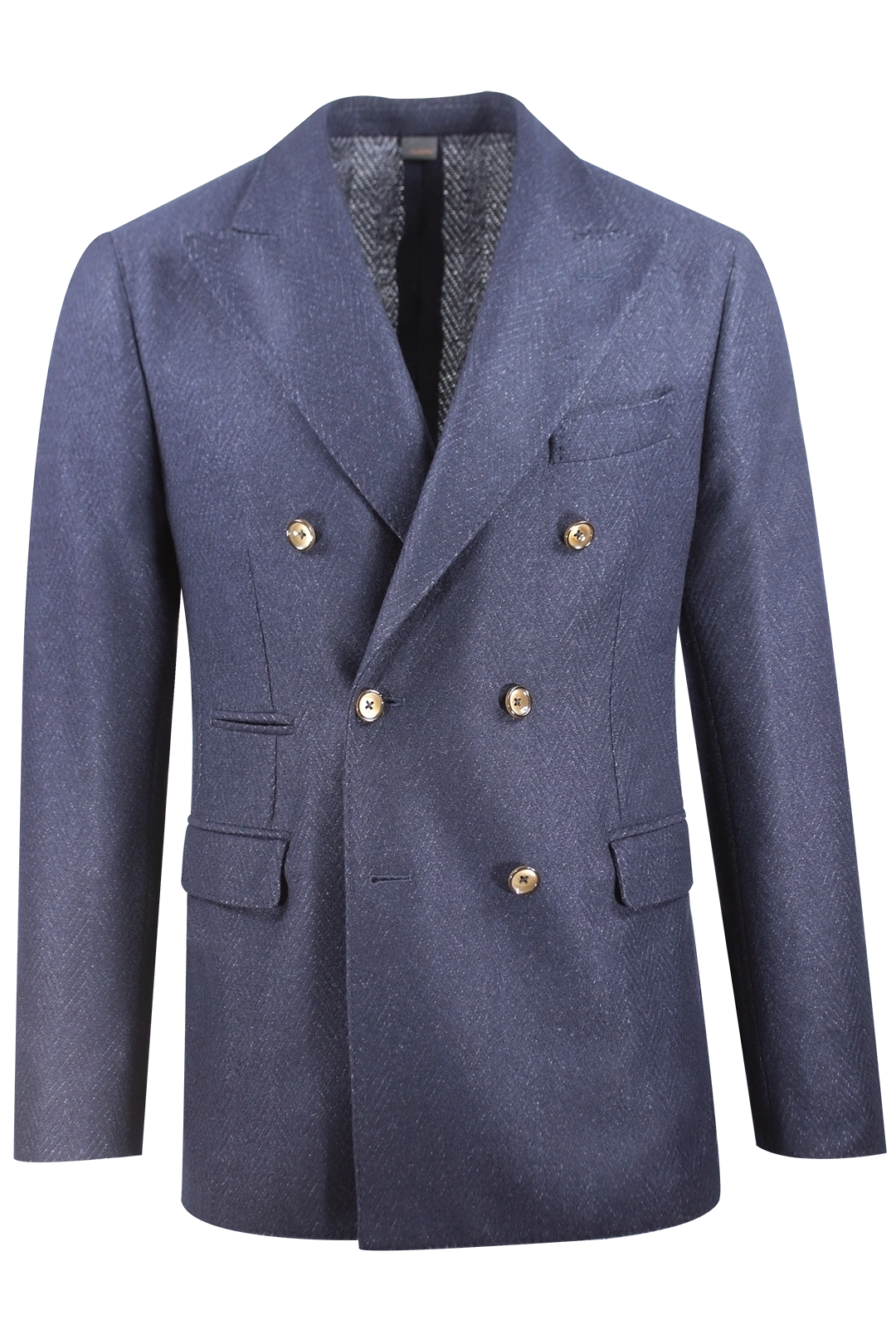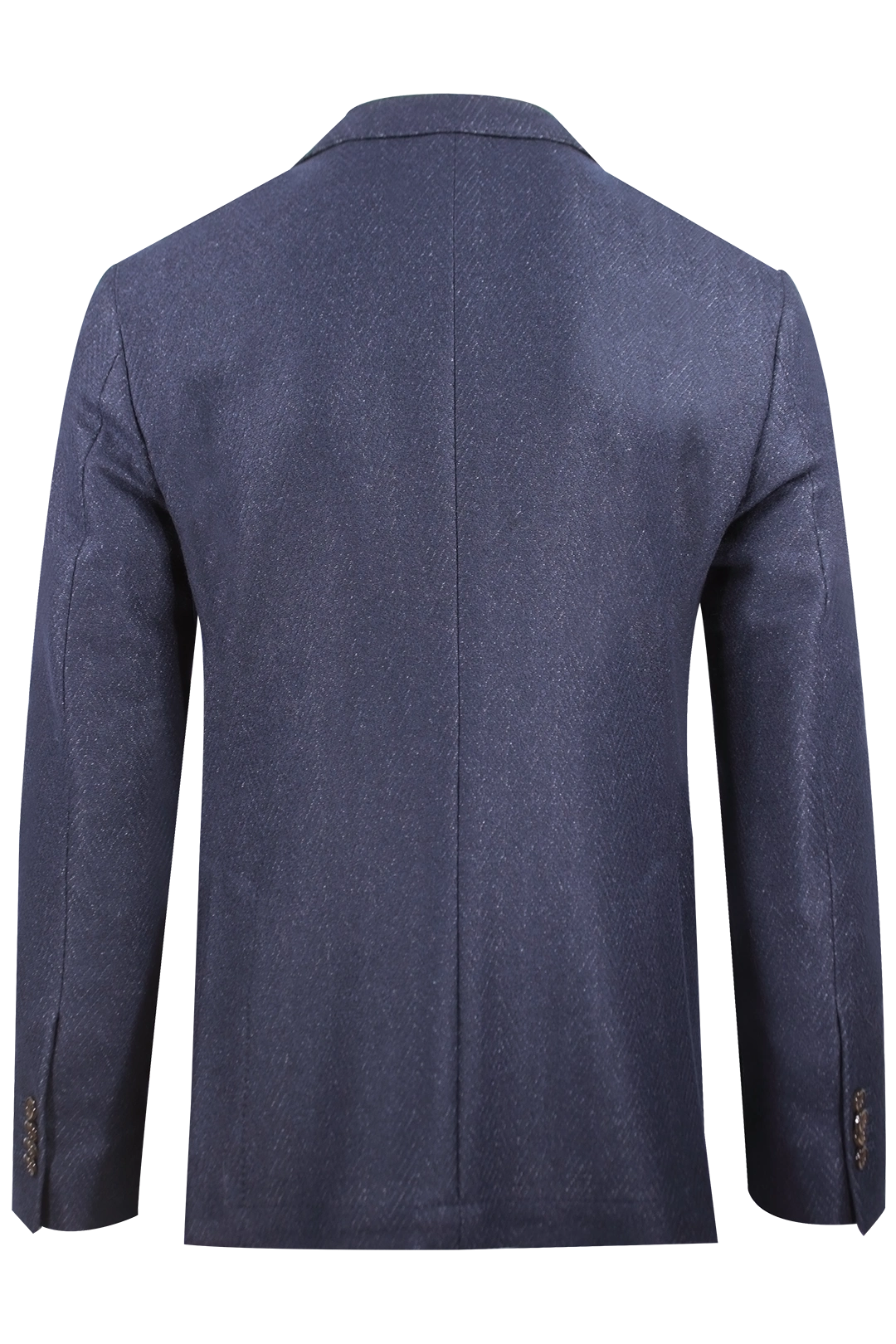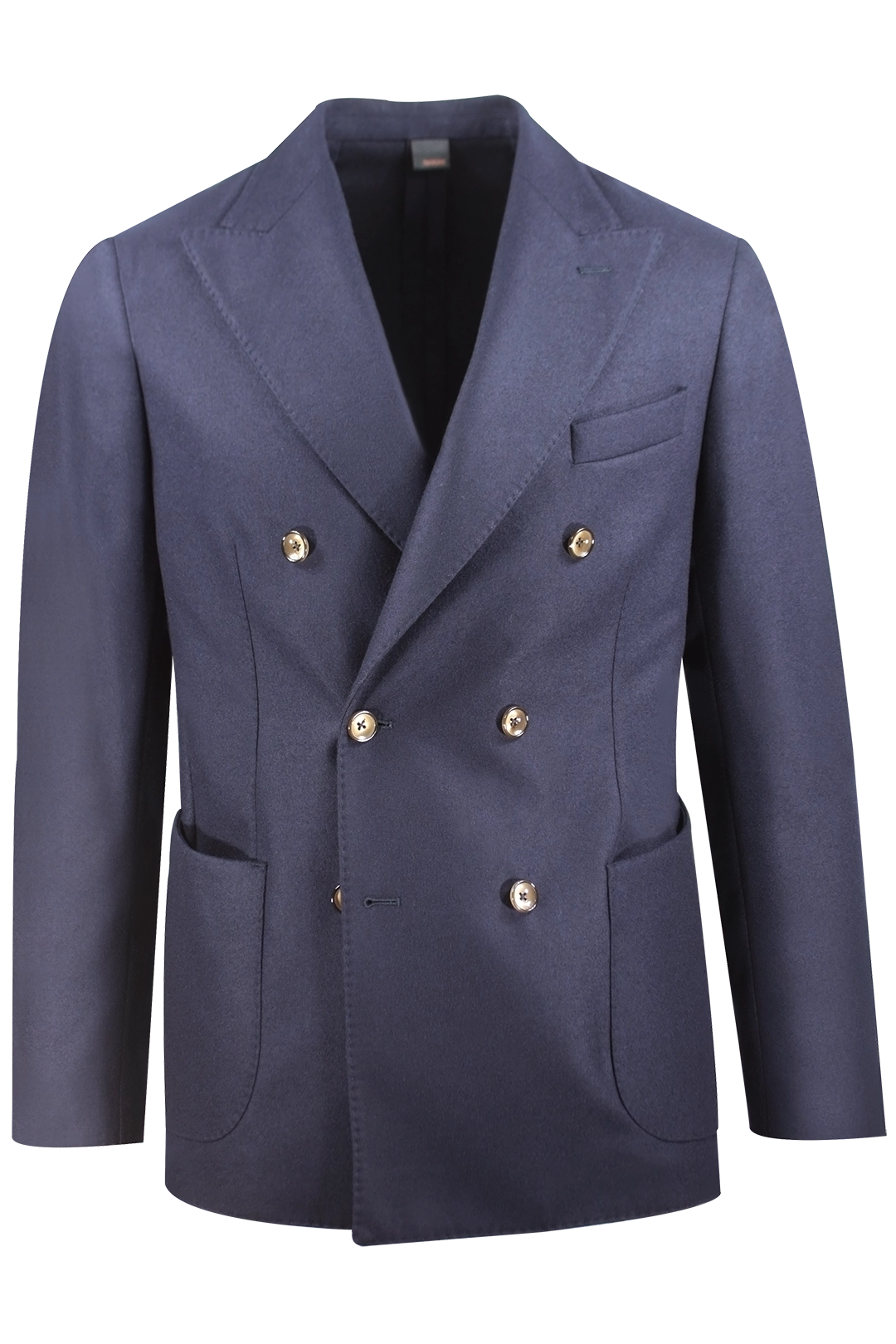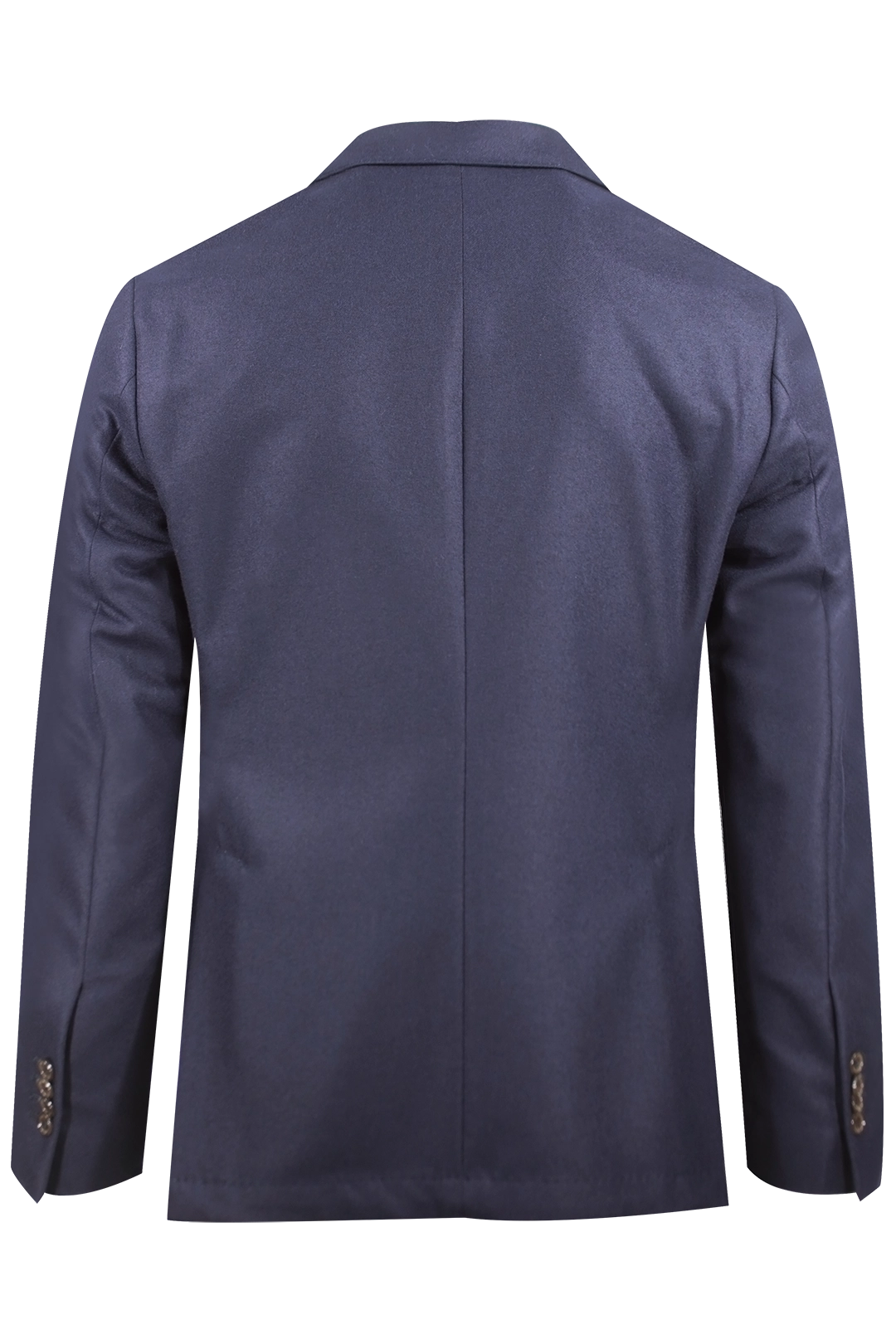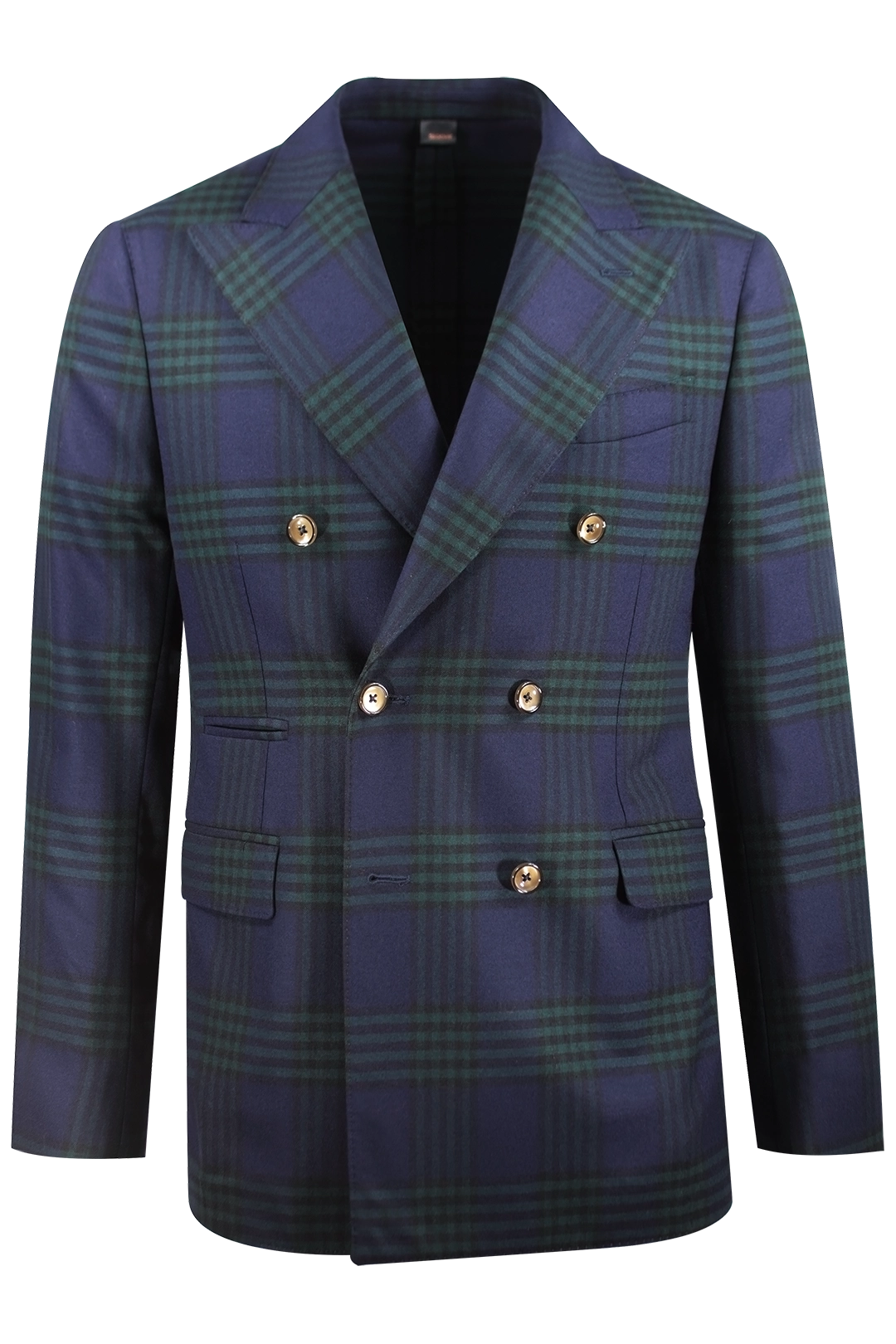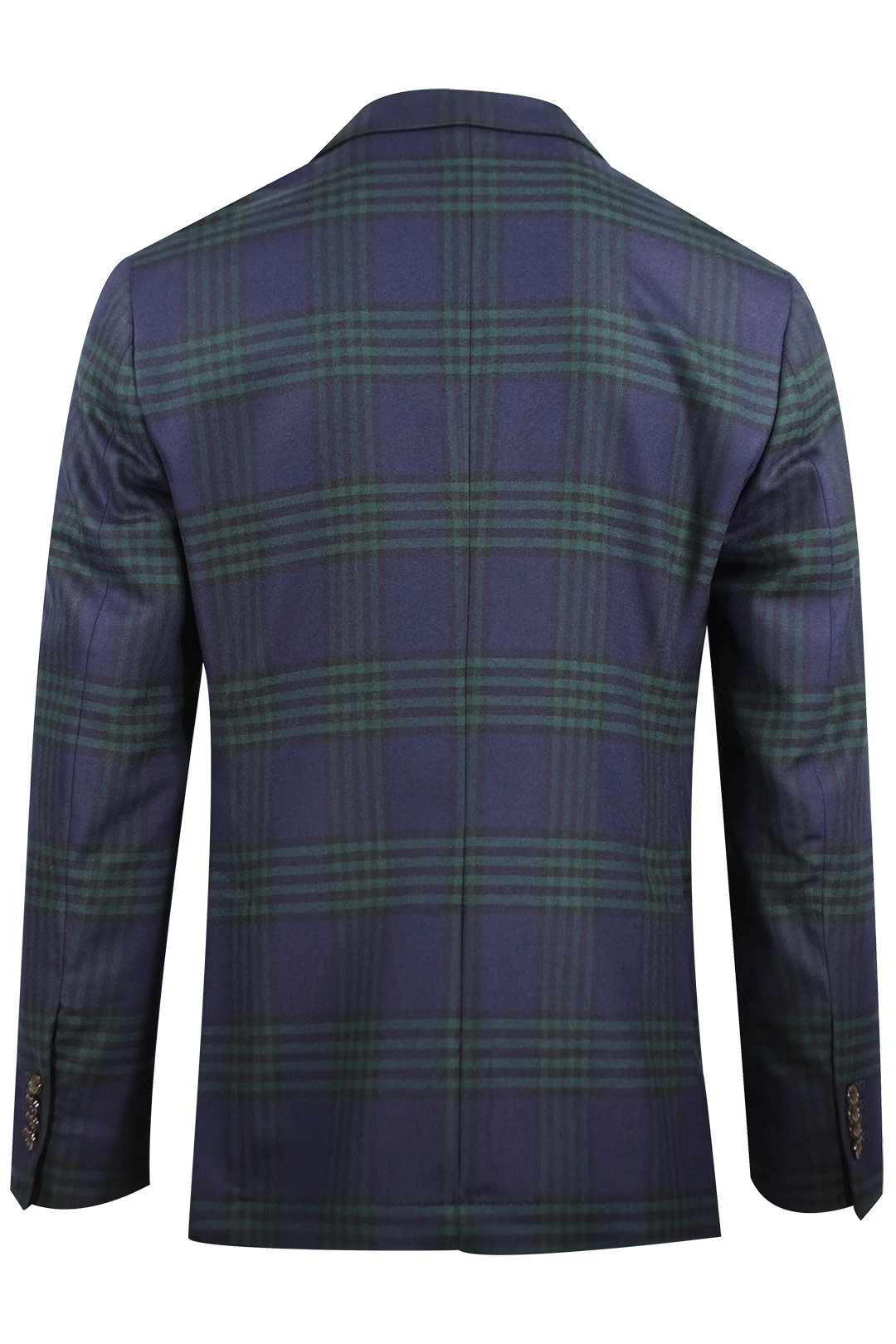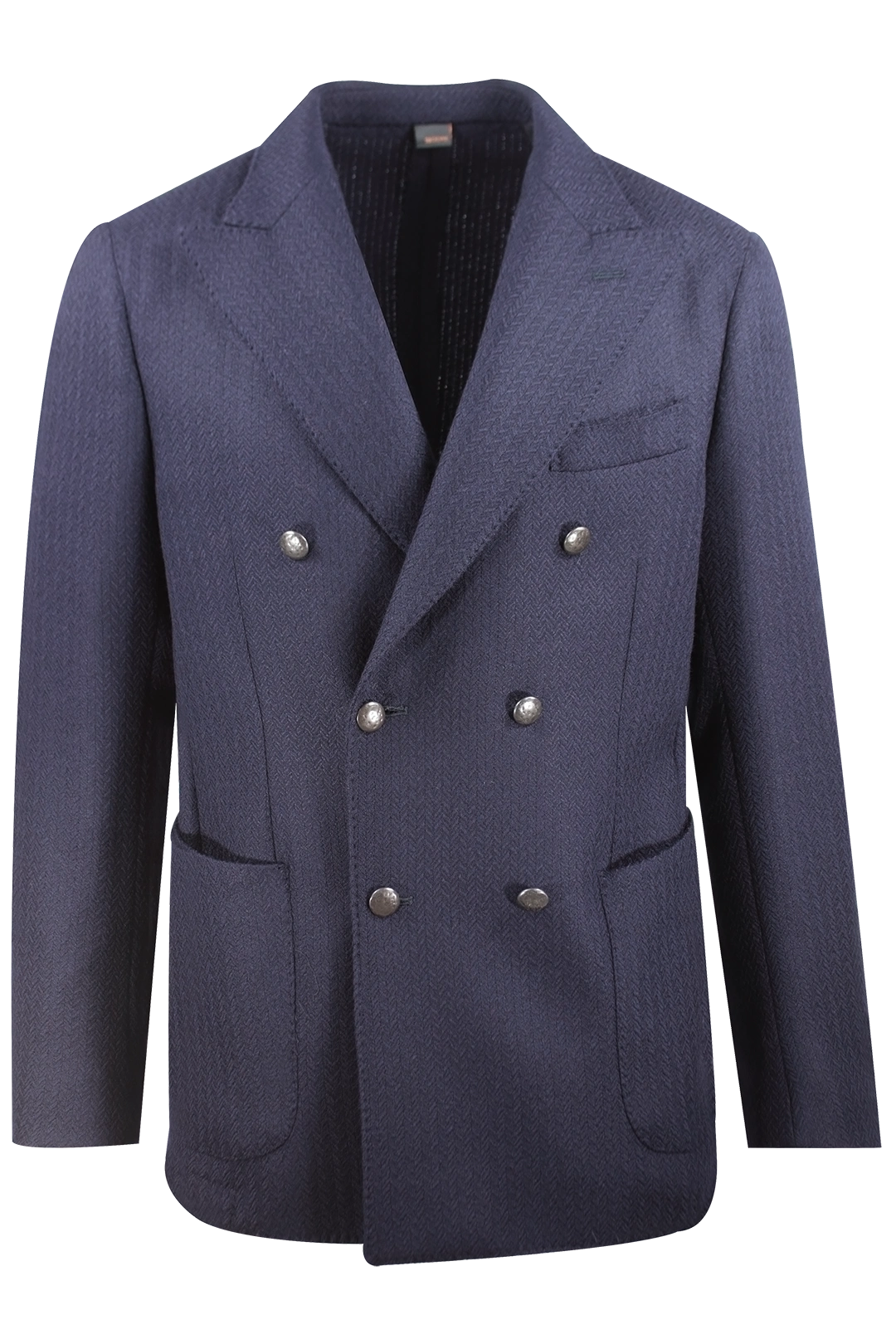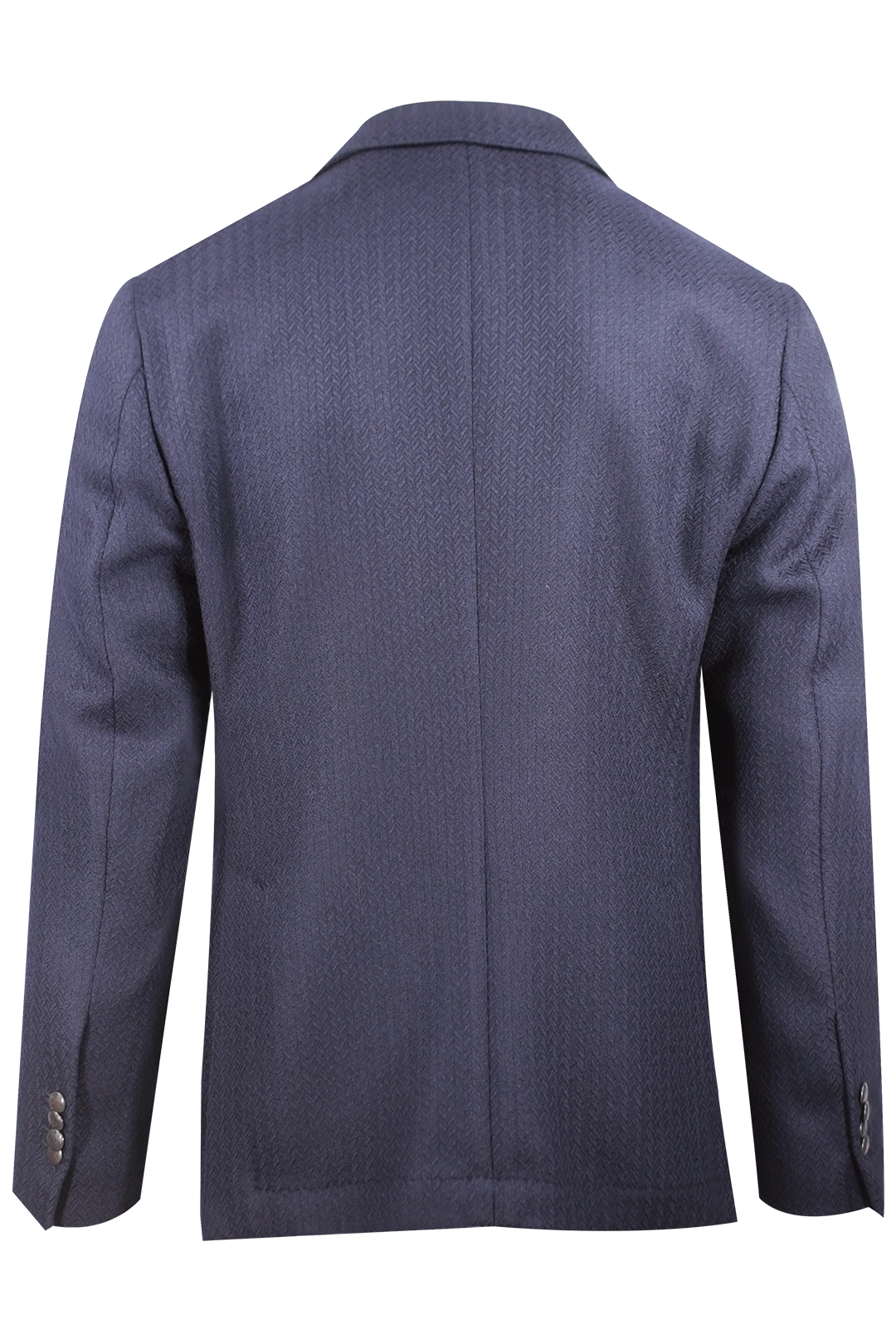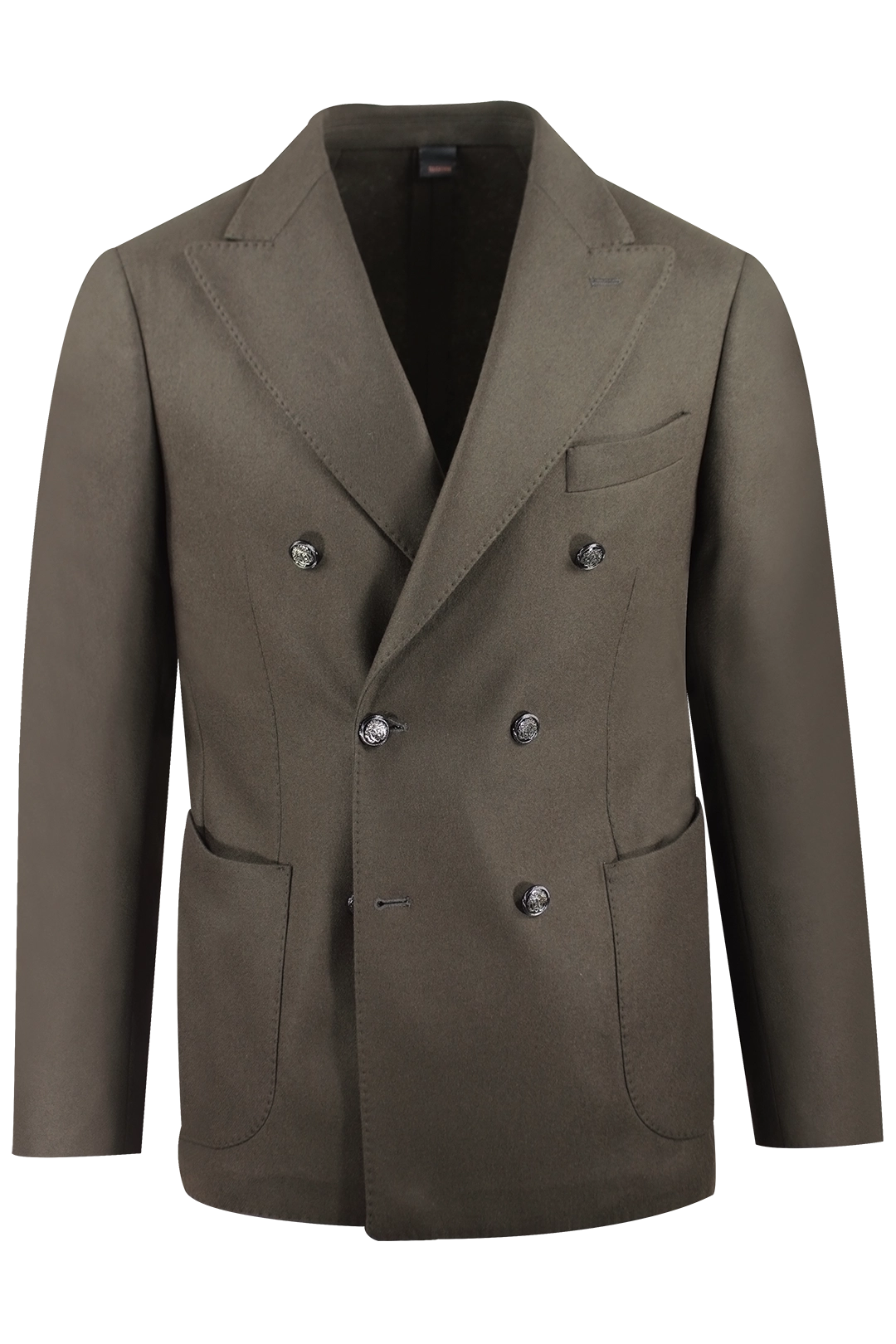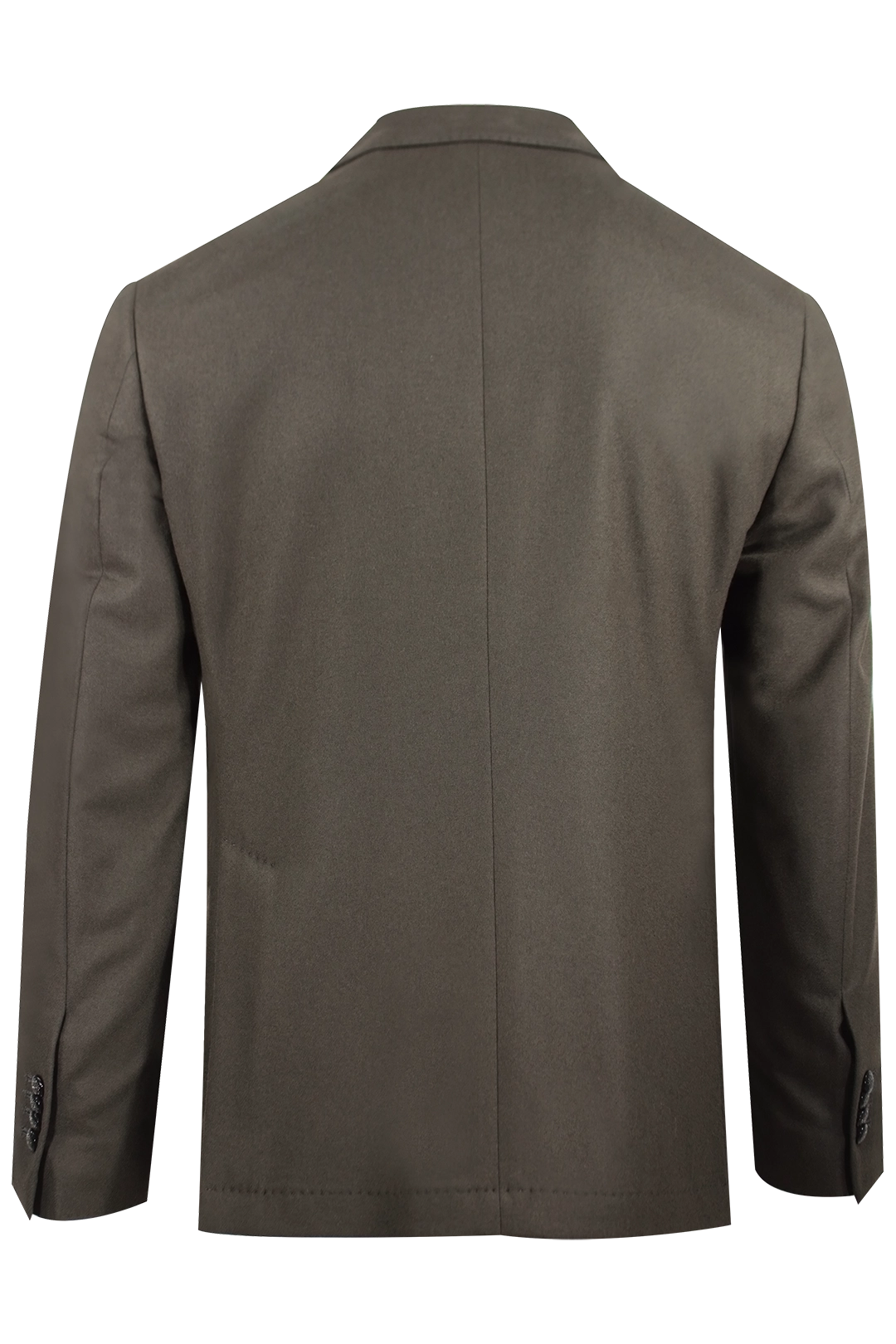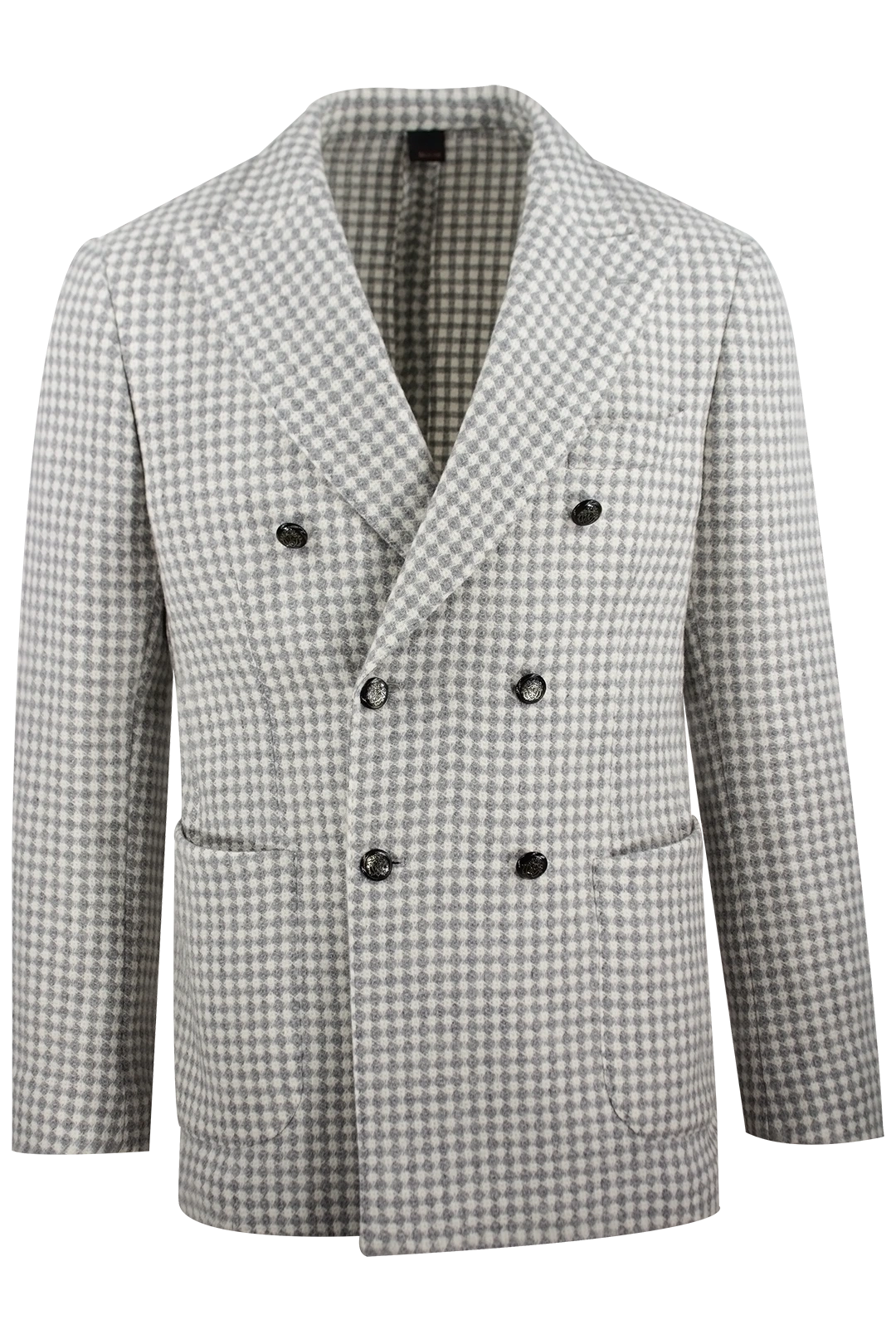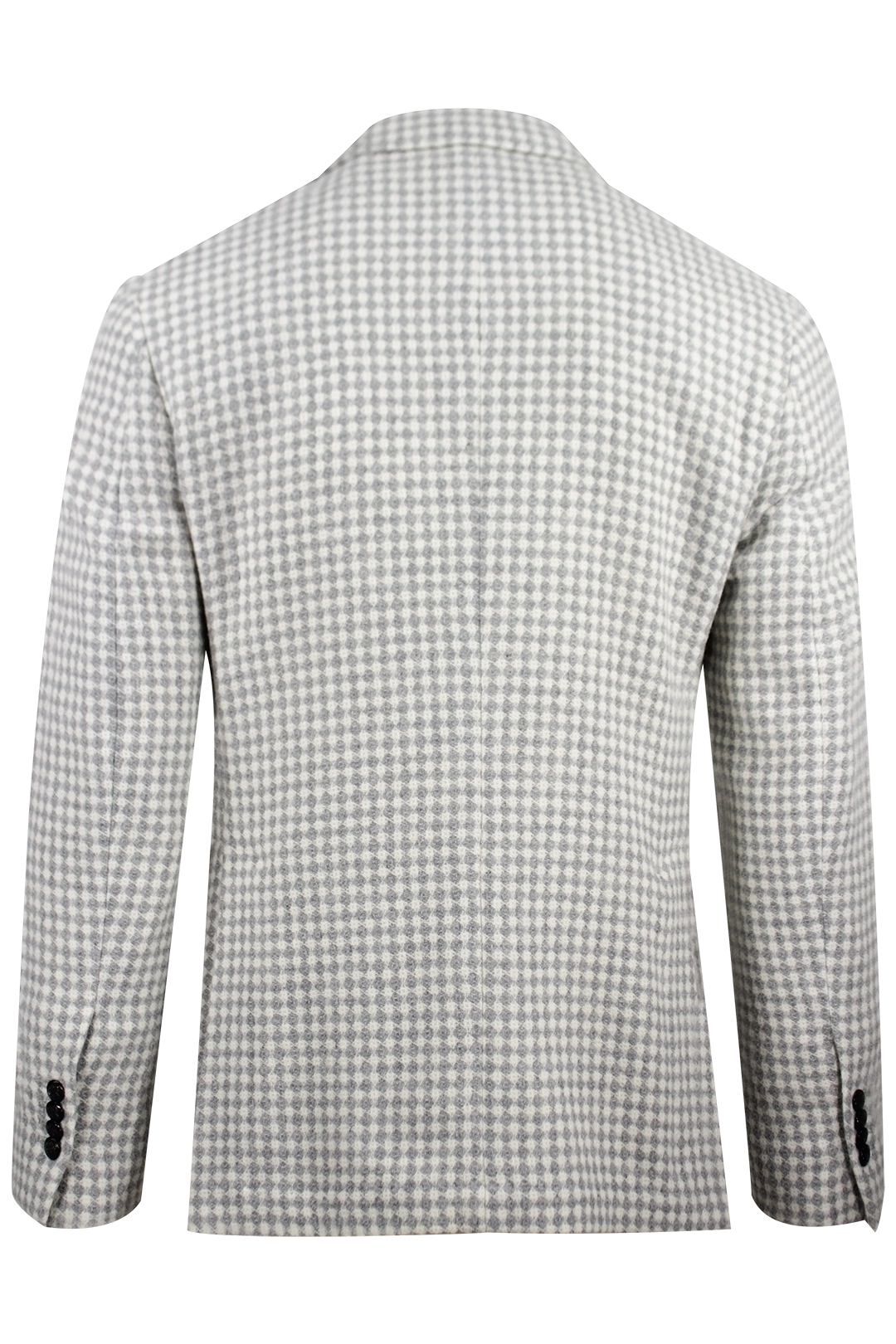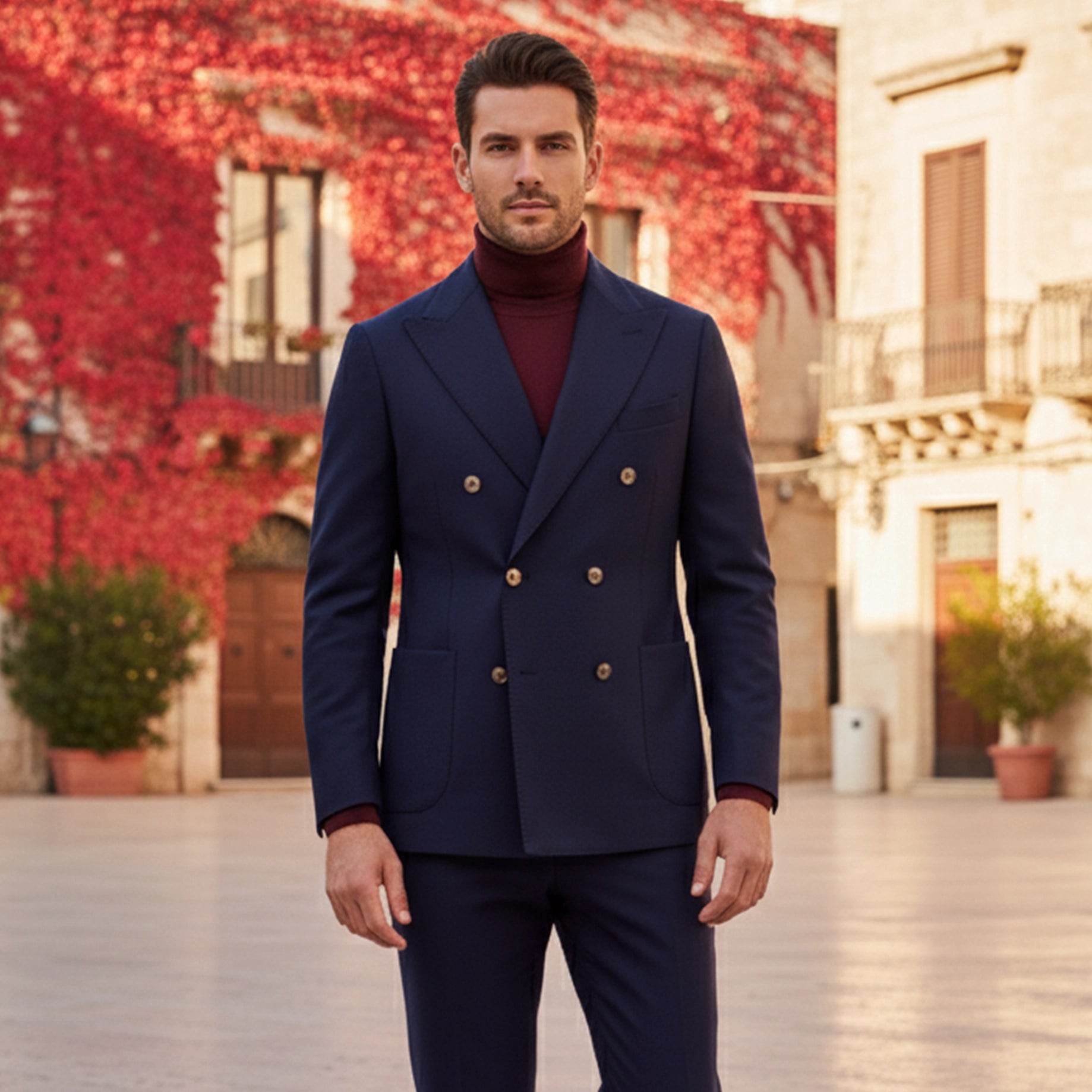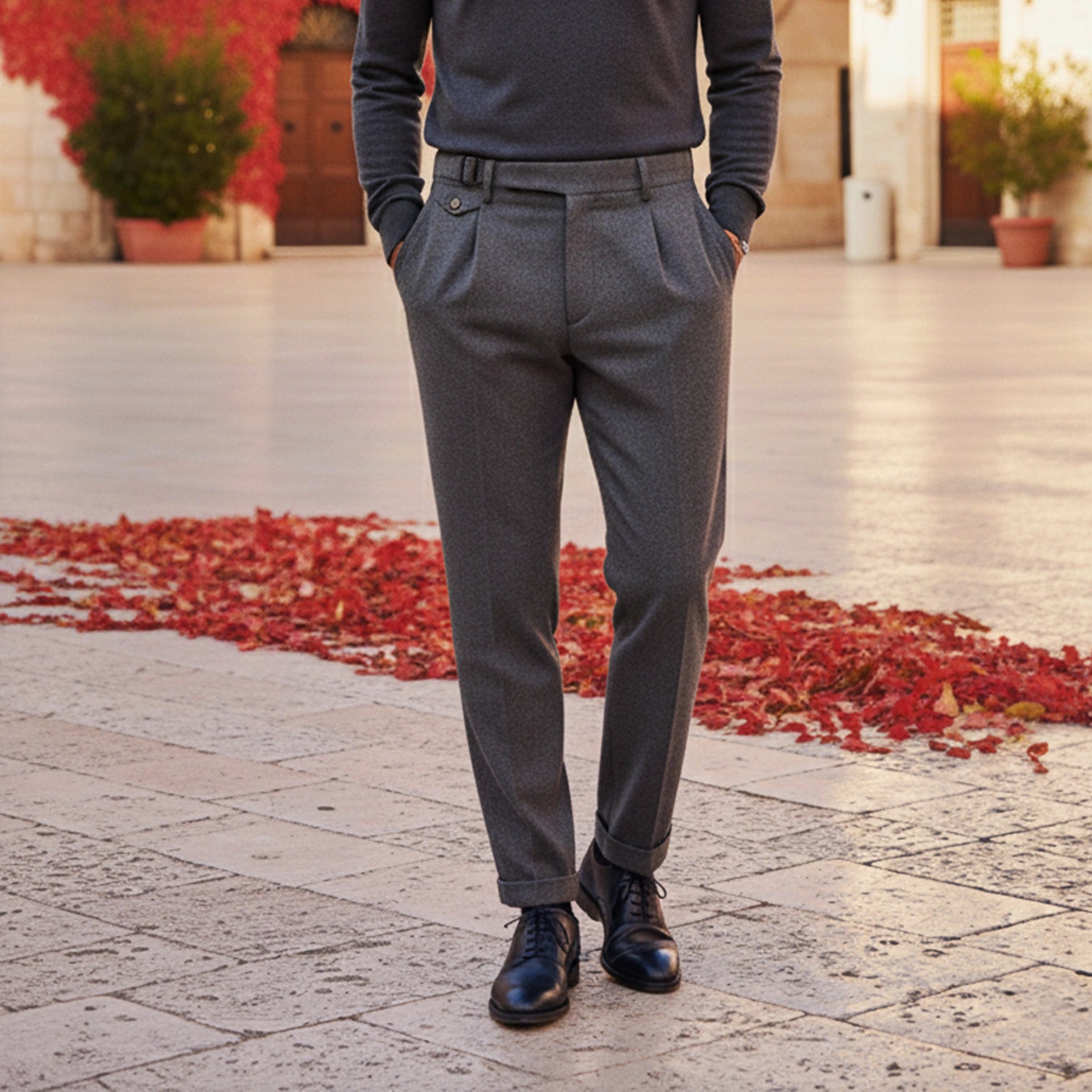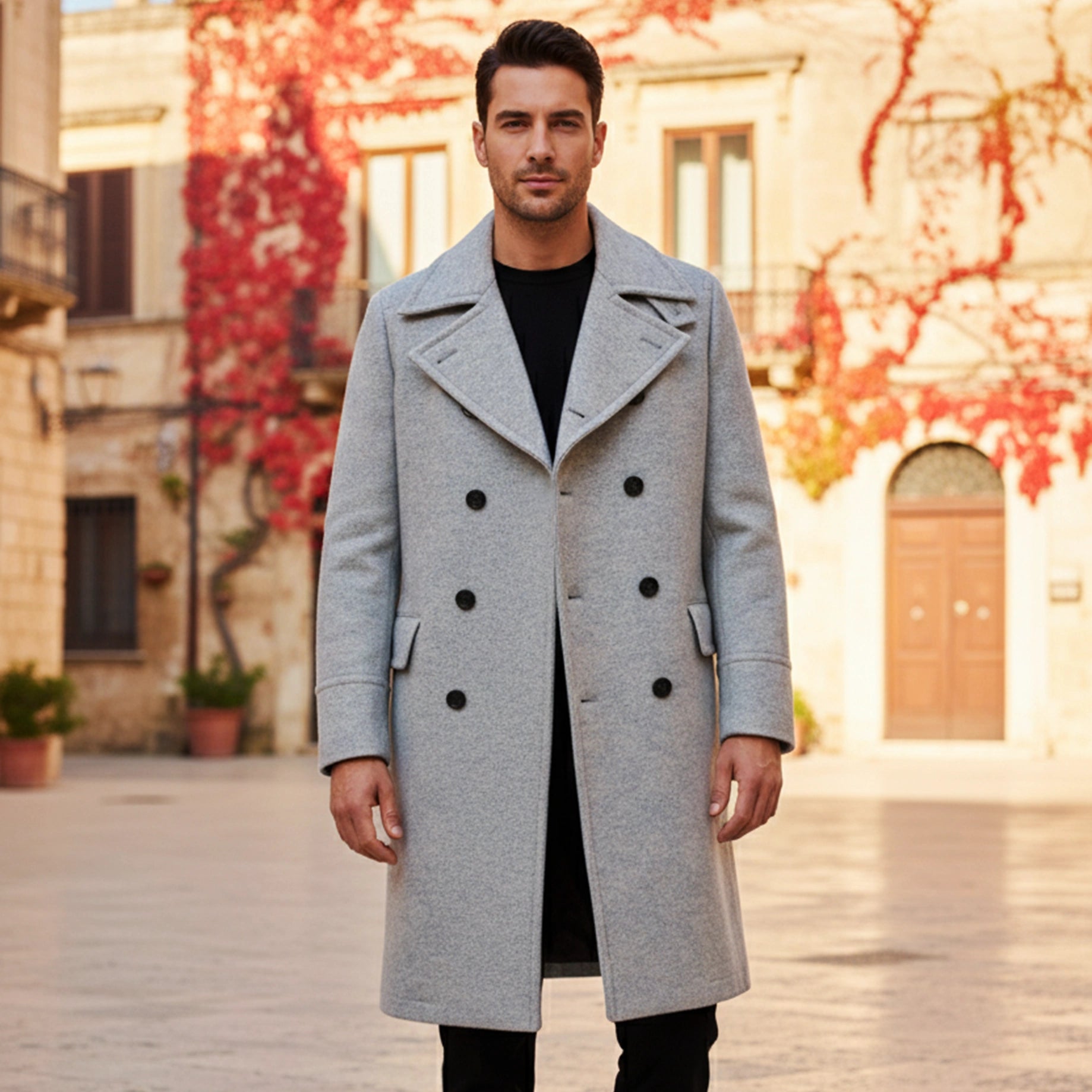In a world of fleeting fashions, the tailored coat is a must-have in a man's wardrobe. Every detail, from the fabric to the cut, is never casual, but responds to precise needs of functionality, aesthetics, and comfort. This guide is a roadmap to deciphering these codes, a journey through the individual elements that transform a coat into "that" coat.

FABRIC
Choosing the right fabric is the first, crucial step. A high-quality material made from natural fibers not only offers superior warmth and comfort, but also ages gracefully, acquiring character over time.
- Virgin Wool : Durable, breathable, and versatile, it's the most traditional choice. Fabrics like tweed offer a rugged, country aesthetic, while worsted wools are more suited to urban, formal settings.
- Cashmere: Incredibly lightweight yet exceptionally warm, a cashmere coat is a pleasure to wear. It requires care, but its elegance is unmatched.
- Camel Hair: Classic and timeless, recognizable by its iconic natural color. It offers excellent thermal insulation and a soft, slightly lustrous texture. It's the perfect choice for a sophisticated elegance that's less austere than black or blue.
- Alpaca and Vicuña: Considered among the world's most noble fibers, they offer a silky sheen and unparalleled lightness. Vicuña, in particular, is the finest and rarest fiber, a true textile gem for those seeking absolute exclusivity.
- Loden: Originally from Tyrol, this fulled wool fabric is naturally water-repellent and windproof. Perfect for coats with a more rustic and functional style, yet capable of great refinement.
REVER and COLLAR
The lapel, or collar, is the element that more than any other defines the character of a coat, determining its degree of formality and visual impact.
- Notch lapel: The most versatile and traditional choice, it's typical of single-breasted coats, like the Chesterfield, and is perfectly suited to both formal and more casual looks. Its width can vary depending on fashion and personal taste, but it remains a symbol of understated elegance.
- Peak lapel: Stately and imposing, it's the ideal option for double-breasted coats, such as the Ulster or Paletot. The upward-pointing points elongate the figure and lend an authoritative and formal air. It's a striking detail, perfect for those seeking a garment that won't go unnoticed.
- Ulster Collar: A distinctive and functional variation, this collar features a wide, notched lapel that can be turned up to protect against the cold and wind. Named after the coat of the same name, it's a detail that combines classic style and practicality, evoking an elegance from days gone by.
SHOULDERS
The construction of the shoulder of a coat is fundamental to defining its silhouette, plumbness and comfort.
- Saddle or constructed shoulder: This is the most formal and structured shoulder. The use of internal padding (the "rollino") creates a clean, defined line, giving the coat a rigorous, formal look. This construction helps give structure to the figure, emphasizing the breadth of the shoulders.
- Natural or shirt shoulder (Neapolitan shoulder): Typical of Neapolitan tailoring, this shoulder is free of significant padding. It follows the natural line of the body, offering superior comfort and a softer, more relaxed look. It's the ideal choice for less formal coats, which focus on a comfortable, relaxed fit.
- Raglan shoulder: In this construction, the sleeve is not sewn to the armhole, but continues to the collar with a diagonal seam. This type, typical of styles like the Trench or Loden, offers maximum freedom of movement and is associated with a more sporty and informal style.

BUTTONING AND BELT
The way a coat closes largely determines its style and functionality.
- Single-breasted: Simple and clean, this is the most popular and versatile design. It can have two, three, or four buttons. A very refined variant is the hidden buttoning (fly front), in which the buttons are covered by a fabric flap, creating a continuous and extremely elegant front line.
- Double-breasted : Impressive and classic, the double-breasted jacket is inherently more formal and structured. The arrangement of the buttons (usually six or eight, with two or three fastenings) creates a layer of overlapping fabric that offers greater protection from the cold. It is the iconic closure of coats like the Paletot and the Ulster.
- Waist belt: The belt can be an integral or additional element and serves to accentuate the waistline, giving structure to the silhouette. It can be loosely knotted for a more casual look or fastened with a buckle. The "martingale," on the other hand, is a half belt applied only to the back of the coat, a stylistic detail that serves to adjust the width and give shape to the garment.
POCKETS
The pockets of a tailored coat are not only a functional element, but also help define its style and level of formality.
- Welt pockets with flaps: These are the most common on formal coats. The flap protects the contents from the rain and, like jackets, can be tucked inside for an even cleaner, more minimalist look.
- Slanted pockets (or welt pockets): Often found on medium-length coats, diagonal pockets are more comfortable to slip your hands into and give the garment a slightly more dynamic and less rigid look. They are a classic of the Covert coat.
- Patch pockets: Applied externally, they are the sportiest and most informal type. They are perfect for relaxed coats, such as the Loden or some Ulster models, adding a touch of practicality and a more casual aesthetic.
The details that make the difference
It's the less obvious details that transform a good coat into a masterpiece:
- Lining: It can be fully lined for maximum warmth and glide over clothing, or partially lined for added lightness. Choosing a cupro lining in a contrasting color or with a unique pattern is a luxurious touch.
- Back Vent: The center back vent is essential for freedom of movement, especially in long coats. Its depth and workmanship are indicators of quality.
- Cuffs: They can be simple or embellished with details like straps or cuffs, adding a touch of vintage flair and making a statement. Buttonholes at the cuffs, if they open, are an unmistakable sign of tailoring.
- Stitching: The hand-stitched stitching along the lapels, pockets, and hem (AMF stitching) is not just decorative, but also bears witness to the hours of tailoring work dedicated to the garment, giving it value, soul, and three-dimensionality.
Discover our collection of MEN'S TAILORED COATS

